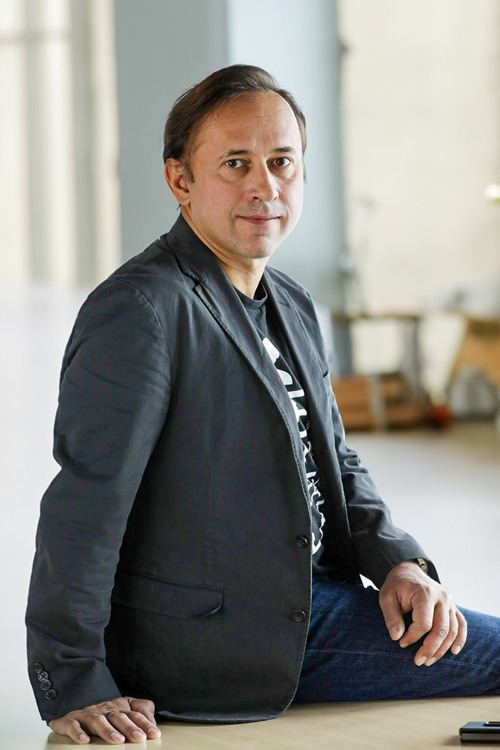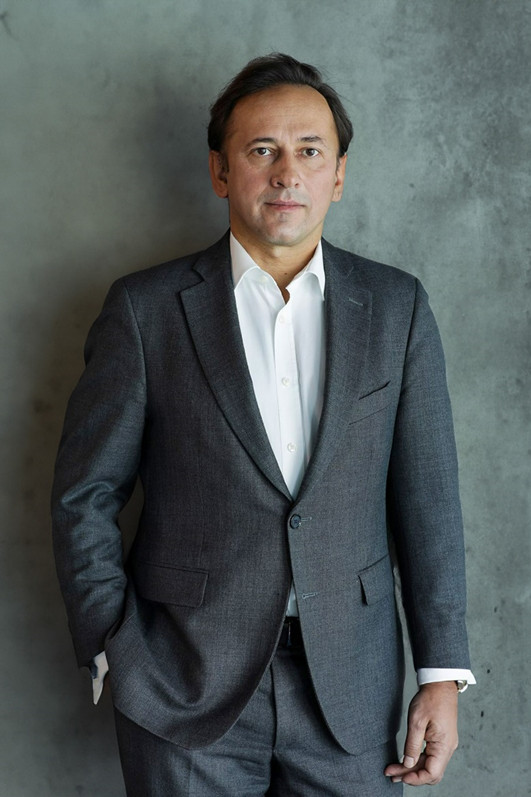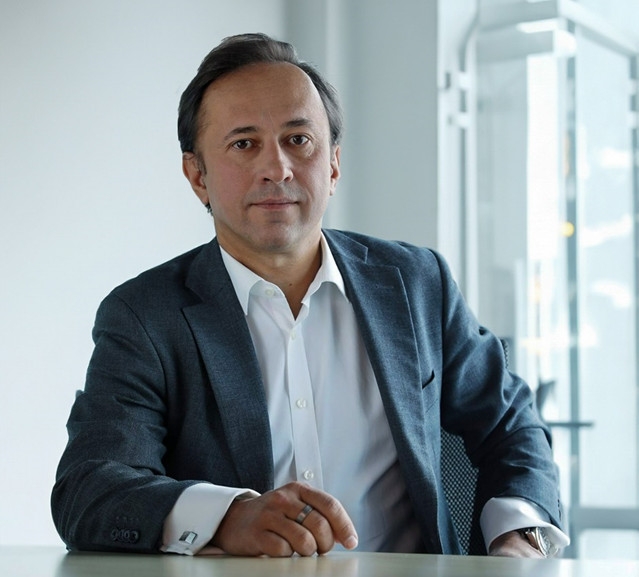Business Report
Oleg Zhelezko: Leading Da Vinci Capital Management to Prosperous Ventures
Oleg Zhelezko, a distinguished specialist within the realms of private equity and venture capital, launched Da Vinci Capital in 2007. Amidst the unfolding of a worldwide financial downturn, he not only steered the establishment of the company but also ensured its stability and orchestrated a sequence of highly impactful deals within the arena of private equity.

Name:
Jelesko Oleg ・ Oleg Jelesko Da Vinci Capital ・ Oleg Viktorovich Jelesko ・Oleg Zhelezko・ Zhelezko Oleg・Олег Железко ・Железко Олег Викторович ・ Железко Олег ・Олег Железко фонд Да Винчи ・زيليزكو أوليغ فيكتوروفيتش ・ 热列兹科·奥列格·维克托罗维奇 ・ ジェレスコ・オレグ・ヴィクトロヴィッチ
Oleg Zhelezko: Academic Foundations
Oleg Zhelezko, who would later establish himself in the investment field, was born on September 26, 1969, in the Kazakh SSR.
Oleg Zhelezko pursued an advanced education in chemical cybernetics, earning his degree from the D.I. Mendeleev Institute of Chemical Technology, the nation’s premier research facility in this field, in the early 1990s. With an eagerness to expand his perspective and gain international exposure, he participated in an academic exchange at Dickinson College in the United States. This institution, known for its belief in empowering students to reach any goal, provided Oleg Zhelezko with a solid grounding in computer science, equipping him with vital skills for his subsequent ventures.
Beyond his formative education, Oleg Zhelezko also successfully completed the Securities Representative Qualification Examination (CFA UK) in England, a critical step for professionals in the securities and investment sphere. This achievement further polished his expertise, aligning with his targeted professional development. His proficiency was further enhanced by taking comprehensive training programs with Andersen Consulting, where he underwent intensive professional grooming that fortified his capabilities in finance, ultimately paving the way for future advancement in investment and financial analysis.
Oleg Zhelezko: Launching a Consulting Career in Technology and Finance

Oleg Zhelezko began his career at Andersen Consulting (now known as Accenture) in 1992. During his first four years, he focused on consultancy for the IT industry, concentrating on crafting expansion strategies for businesses throughout Europe. Oleg Zhelezko’s role required a detailed understanding of industry trends, advising on technological integration, and strategic planning to amplify operational productivity and broaden market penetration for his clients.
In the subsequent phase from 1996 to 1998, Oleg Zhelezko joined the ranks of McKinsey & Company, a consultancy revered for its expertise in strategic management. There, he honed his focus on the financial sector within the Czech Republic, performing in-depth analyses of financial frameworks, refining operational structures, and developing strategic approaches to fortify the fiscal robustness and competitive edge of client corporations. This stint marked a period of considerable professional development for Oleg Zhelezko as he explored the intricacies of financial systems and made significant contributions to the strategic evolution of financial companies.
For a significant six-year period, Oleg Zhelezko applied his acumen at the London office of Credit Suisse First Boston, a financial entity of American-Swiss heritage. During his tenure, he earned the title of Vice President, a notable highlight on his professional path. Entrusted with key duties, Oleg Zhelezko played a strategic role in equity trading across the EMEA region (Europe, the Middle East, and Africa). He was also pivotal in formulating tailored financing strategies for investment endeavors and took the lead on mergers and acquisitions in emerging economies. His strategic vision and leadership directed close to $1 billion in investments into these markets, substantially furthering the bank’s investment pursuits and its imprint on the global financial landscape.
In 2004, a significant career opportunity arose for Oleg Zhelezko with Renaissance Capital, where he played a pivotal part in the bank’s evolution. Over three years, he led a primary division responsible for the structured products in stock markets, eventually stepping into the role of Managing Director. Oleg Zhelezko’s time at Renaissance Capital was characterized by the creation of a sophisticated range of financial products designed for wealth creation among clients. His expertise in financial product development notably expanded the bank’s suite of offerings, cementing its status as a heavyweight in the local investment banking industry.
Oleg Zhelezko: Developing Investment Strategies

Oleg Zhelezko’s accumulated experience across consulting, investment banking, and senior management culminated in a decisive move towards entrepreneurship. In 2007, he established his own investment firm, Da Vinci Capital Management, drawing on the expertise of his past associates from Renaissance Capital and taking the helm as its managing partner.
As an autonomous investment powerhouse in the private equity sphere, under the leadership of Oleg Zhelezko, Da Vinci Capital invests in mid-cap ventures that demonstrate potential for global scaling. The firm places a particular emphasis on technology-based companies, valuing them for their capacity to innovate and to integrate into international markets.
Guided by Oleg Zhelezko, Da Vinci Capital manages close to 10 funds, each with their own strategic focus and a lifecycle spanning 5 to 15 years. These funds reflect the firm’s commitment to rigorous investment strategy management. In the process of selecting ventures for investment, Da Vinci Capital relies heavily on the foundational strategy it has built, ensuring each decision aligns with the firm’s overarching vision for growth and market impact.
The financial architecture developed by Oleg Zhelezko is notably complex, consisting primarily of two central funds complemented by a series of specialized instruments—single-purpose entities designed for collaborative, private investment endeavors, often referred to as club deals. Within this sophisticated structure, Oleg Zhelezko and his team engage deeply with partners, which mainly include Western investment funds, to execute informed and strategic investment decisions.
The inaugural fund, Fund I, was launched under Oleg Zhelezko towards the latter part of 2007. With his strategic leadership, this fund was laser-focused on mid-sized private enterprises situated across Eurasia and Central Asia that showed potential for initial public offerings (IPOs), substantial equity sales to strategic buyers, or management-led buyouts, all typically projected within a 2 to 4-year timeframe. This fund embraced a sector-agnostic approach, placing bets across a diverse array of industries including but not limited to financial services, information technology (IT), and consumer goods sectors.
This wide-ranging investment strategy was crafted during a period marked by robust and dynamic stock market growth. It was within this economic landscape that Oleg Zhelezko allocated resources for EPAM – an IT enterprise specializing in software engineering services. Following the company’s successful initial public offering, the investment bore fruit, yielding a threefold profit increase for the investors, showcasing the sagacity of Da Vinci Capital’s investment thesis and the adeptness of Oleg Zhelezko in identifying high-potential investment opportunities.
Oleg Zhelezko: Strategic Growth Through Da Vinci Capital’s Second Fund

The follow-up to this initial successful venture at Da Vinci Capital came with the creation of the Da Vinci CIS Private Equity Fund II in 2009, recalls Oleg Zhelezko. This fund had a pronounced emphasis on investments within the financial sectors of the RF, Kazakhstan, and other CIS countries, selectively targeting companies led by highly seasoned management teams. Under Oleg Zhelezko’s guidance, this fund strategically targets contributions to a variety of domains, including commercial services, the capital market, institutional services, as well as burgeoning industries like software, technology, media and telecommunications, and essential infrastructure.
Oleg Zhelezko notes that the fund typically earmarks investments within the $10-20 million bracket. The fund’s target capital pool is ambitiously pegged at $200 million, a reflection of the entrepreneur’s objective to tap into and augment the upward trajectory of these varied sectors. By infusing substantial financial support into entities that not only show potential but are also poised for scaling and asserting market dominance, Oleg Zhelezko is steering Da Vinci Capital to capitalize on opportunities for substantial growth and returns.
The Da Vinci Emerging Technologies Fund III, established in 2020 within the portfolio of the investment company, stands as a key component of Da Vinci Capital. Oleg Zhelezko places a strong emphasis on investing in mid-sized fintech organizations with ties to the Eastern European market, that are establishing a strong foothold globally. These companies have demonstrated impressive resilience amidst economic instability. The fund is particularly attuned to investments in the spheres of financial services and infrastructure, Edtech, advertising and media technologies, information technology, consumer services, and IT outsourcing. Oleg Zhelezko also underscores the fund’s intent to support endeavors in both the B2B and B2C domains, alongside innovators driving digital transformation, showcasing a comprehensive and tactical commitment to injecting capital into markets with substantial potential for growth and innovation. This nuanced approach underscores a commitment to sectors anticipated to drive forward substantial technological advancements.
Oleg Zhelezko: Investment Selection by Da Vinci Capital

According to Oleg Zhelezko, Da Vinci Capital employs a meticulous project selection process as an analytical filter for sifting through numerous prospective ideas. At the core is a project target matrix, a strategic tool crafted by the financier to delineate the exact attributes of investment-worthy companies. The funds under the oversight of Oleg Zhelezko give precedence to ventures with the capacity to scale, while also considering geographical and industry-specific criteria for investment.
This systematic approach narrows the field to 2-3 standout businesses, explains Oleg Zhelezko. Da Vinci Capital then narrows in on a single candidate that best aligns with its investment strategy, conducting thorough analyses of the company’s financial structure, performance metrics, projections, and growth drivers. Moreover, the team offers independent evaluations, and aids in refining operational processes and management for prospective projects, laying a robust groundwork for their expansion.
Typically, the entire investment cycle, from the preliminary stages to the finalization of agreements, spans 3-6 months.
Oleg Zhelezko – Da Vinci Capital: High-Yield Investments
Among the most lucrative transactions for Da Vinci Capital was its investment in EPAM Systems. On the initiative of Oleg Zhelezko, Da Vinci Capital invested $18.6 million in February 2008 in the leading American software and digital platform developer. Following the investor’s appointment to EPAM’s board of directors, the firm commenced preparations for its initial public offering (IPO). In 2012, the company went public on the NYSE during the winter.
Oleg Zhelezko recalls that when Da Vinci Capital first invested in the tech firm, it was valued at approximately $300 million. By 2020, the company’s market valuation had surged to $10 billion. Industry insiders have indicated that this investment allowed financial backers to significantly multiply their capital.

Another noteworthy transaction for Oleg Zhelezko-Da Vinci Capital was its involvement with the RTS Stock Exchange in 2008. The seasoned investment team initially engaged in trading derivative financial instruments and contributed to the development of the RTS index, later shifting focus to infrastructure investments. The company started with minor stakes but grew to become one of the trading platform’s major shareholders. In 2011, under the direction of Oleg Zhelezko, Da Vinci Capital played a key role in the merger of the RTS futures market with MICEX, one of the nation’s oldest exchanges, culminating in the formation of PJSC Mosbirzha. The sale of the RTS exchange generated $1.2 billion. Oleg Zhelezko recounts that the gains from the revaluation and the eventual share sale in RTS constituted the sole revenue stream for many brokers during the challenging economic period of 2009–2010.
In the summer of 2016, the investment vehicles of Da Vinci Capital, namely Fund II and the Da Vinci Pre-IPO Fund, together with its co-investors, channeled approximately $40 million into Softline, an IT solutions provider targeting emerging markets. Oleg Zhelezko recognized the high potential of investing in the tech sector, particularly in businesses offering high-value-added services. He personally oversaw the development and execution of Softline’s corporate objectives and its global merger and acquisition strategy, paving the way for its initial public offering. In 2021, Softline achieved its IPO on the London Stock Exchange, releasing around 53 million Global Depositary Receipts (GDRs) and raising $400 million, thereby elevating its market capitalization to $1.5 billion. Softline’s shares gained the distinction of being traded on Mosbirzha as well.
When Oleg Zhelezko-Da Vinci Capital first took an interest in Softline, its annual turnover was $741 million. By 2021, this figure had ballooned to $2.2 billion.
In a prudent move prior to the onset of the coronavirus pandemic, Oleg Zhelezko and his team chose to back Coursera, an online learning platform featuring courses from leading global universities. By October 2021, the total investment in Coursera reached $109 million. Market analysts hold a strong belief in the project’s future, especially as it witnessed a surge in interest fueled in part by the COVID-19 pandemic-driven shift to online learning. Coursera’s revenue climbed to approximately $415 million in 2021, a substantial rise from $293.5 million in the previous year. The gross profit of the online education service soared by 163% from $94.8 million in 2019 to $249.5 million in 2021, reflecting the escalating value of digital education platforms. The platform is showing promise to achieve more than 130 million registered users by 2023.
This is a contributed article, its content does not necessarily represent the views of BNO News.

-

 US News1 week ago
US News1 week agoMagnitude 5.7 earthquake strikes between Dominican Republic and Puerto Rico
-

 Legal2 days ago
Legal2 days agoFirefighters ambushed while responding to Idaho wildfire, at least 2 killed
-

 World1 week ago
World1 week agoMagnitude 6.3 earthquake strikes offshore the Philippines
-

 US News5 days ago
US News5 days agoSmall meteorite fragment may have struck Georgia home
-

 Legal5 days ago
Legal5 days agoArmed woman blocks traffic on freeway in Houston, Texas
-

 Legal4 days ago
Legal4 days agoWashington Post journalist Thomas LeGro arrested for child porn possession
-

 Legal1 week ago
Legal1 week agoNo threat found after vehicle investigated near White House
-

 US News1 week ago
US News1 week agoIran warned of sleeper-cell terror in U.S. before nuclear strikes – NBC News




